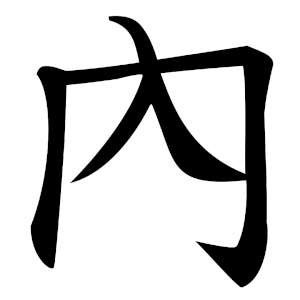內
- inside;
- inner;
- within;
Etymology
Structure:
冂 (멀 경) – represents an enclosure or surrounding area;
入 (들 입) – functions as the phonetic element but also contributes meaning (“to enter”).
Meaning development:
Derived from the verb 入 (to enter).
When combined with 冂 (enclosure), it came to mean “that which is inside” → “inner, interior.”
Oracle bone & bronze inscriptions (金文 jinwen):
Originally written with 入 inside 冂, not overlapping.
In bronze script, 冂 sometimes resembled 宀 (the roof radical).
Clerical script (隸書 lìshū) onward:
Two forms developed: 內 (full form) and 内 (simplified form).
康熙字典 (강희자전) standardized 內 as the “proper” form.
Usage in Korean
It is widely used in compounds like 國內 (domestic), 內心 (inner heart), and 內外 (inside and outside).
Words that derived from 內
- 내(內)–A bound noun used to indicate that something is within a certain range or scope
- 내란(內亂)–rebellion; infighting
- 내복(內服)–thermal underwear
- 내부(內部)–inside; interior
- 내용(內容)–content; substance; details; circumstances; story; message
- 내의(內衣)–underwear; innerwear; undergarment
- 내지(內地)–remote area; secluded area; central area; one's native country; inner part of one's country
- 시내(市內)–downtown
- 시내버스(市內bus)–intra-city bus
